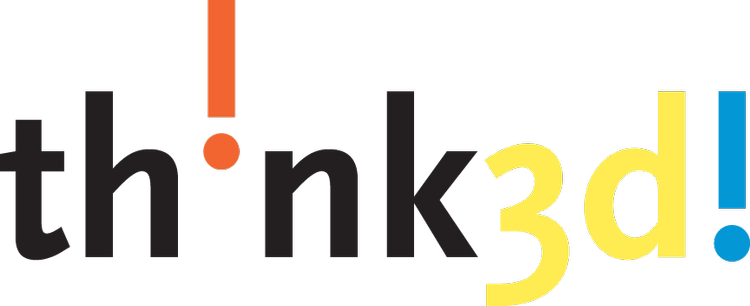Building a foundation for STEM learning.
Think3d teaches third through sixth-grade students the spatial reasoning skills critical to their success and perseverance in science, technology, engineering, and math. Playful and engaging, the program inspires innovative thinking and problem solving through a sequence of engineering design challenges based in origami and paper engineering. Think3d aligns with the Common Core State Standards for Mathematics and promotes the Next Generation Science Standards’ commitment to "raise engineering design to the same level as scientific inquiry in classroom instruction.”
What is Think3d?
Think3d is a sequence of four modules spanning multiple years of primary education. Each module includes six sets of spatial reasoning and engineering design challenges. The sets – A through F – progress from origami to single sheet paper engineering to applied paper engineering and alternate between 2-D to 3-D transformations and reverse engineering.

This is a truly thoroughly thought out and beautifully executed program on spatial reasoning.

— A teacher at the Brooklyn School of Inquiry, a NYC citywide gifted and talented school.
How do students engage with Think3d?
Cast as engineers, students collaborate in pairs and groups. They follow diagrams and analyze models, fold and cut and share insights with their partner and table group to solve challenges. In the process of reverse engineering and constructing three-dimensional models, they compare their work, look for where a step went awry, discover new solutions and define new challenges. Think3d materials encourage problem solving, collaboration and innovation. The engineered models fold flat. Once the session is finished, students are set to pick up the sequence of challenges in the next session. Many students continue thinking about and working on the challenges and concepts between sessions at home, or during school free-time.
Image: 360 spin of Nodding Dog origami model for reverse engineering, digital version.

First, the progression and sequencing of instruction is just elegant. Secondly, the way the program sets the stage for extensions of learning at the student’s initiative is very gratifying to see.

— Bruce Williams, Superintendent of Two Rivers Supervisory Union, VT
What is my role as a teacher?
Teachers facilitate learning. The program was designed to unfold in the students’ hands with little prep-time for teachers. Students collaborate with each other and rely on the resources in hand – the graphic directions, diagrams and models – that describe the engineering design processes and define the core STEM concepts. Teachers can preview the engineering design challenges that will unfold in their classroom by watching a short, online tutorial of each challenge.
Why implement Think3d?
Research has shown that spatial reasoning is a predictor of students' success, perseverance, and innovation in STEM. Think3d aligns with the Common Core State Standards as they relate to STEM education and promotes the Next Generation Science Standards’ commitment to "raise engineering design to the same level as scientific inquiry in classroom instruction.”
How do I implement Think3d?
Think3d was designed to adapt to your classroom. Here are some examples of how teachers implement the program:
Used as a six–twelve week program in the classroom: Over the course of 6-12 weeks, the teacher sets aside 45-minute to one hour blocks of time to introduce each Set and the corresponding spatial reasoning challenges.
Used as a half year program: The teacher introduces individual challenges within each set sequentially, setting aside a smaller amount of time.
Used as an intensive camp: Each morning or afternoon session, the teacher introduces a new Set. Teachers use extra sessions to dig deeper into the engineering design challenges most compelling to their students. The challenges encourage students to frame their own engineering challenges and design solutions to those challenges.
Used as an independent project that 2 students can work on together during choice time or enrichment periods, or in a homeschool setting: Students work through the challenges sequentially, but, at their own pace, allowing more time for exploration and engineering design at their own initiative.

It’s really, really fun and really, really cool and I really like it. It feels like it has nothing to do with learning but probably in your brain there is this thing that it does that makes you smarter, and that’s cool.

— a 4th grade student, Brooklyn, NY
Purchase Think3d
Think3d is currently available as a 1 ) digital online delivery and 2 ) physical box delivery. Click below to learn more and to purchase Think3d for your students!
resource links on Spatial Reasoning and STEM Success
Picture This: Increasing Math and Science Learning By Improving Spatial Thinking
Think3dus.org is a 501(c)(3) Contact us here.





